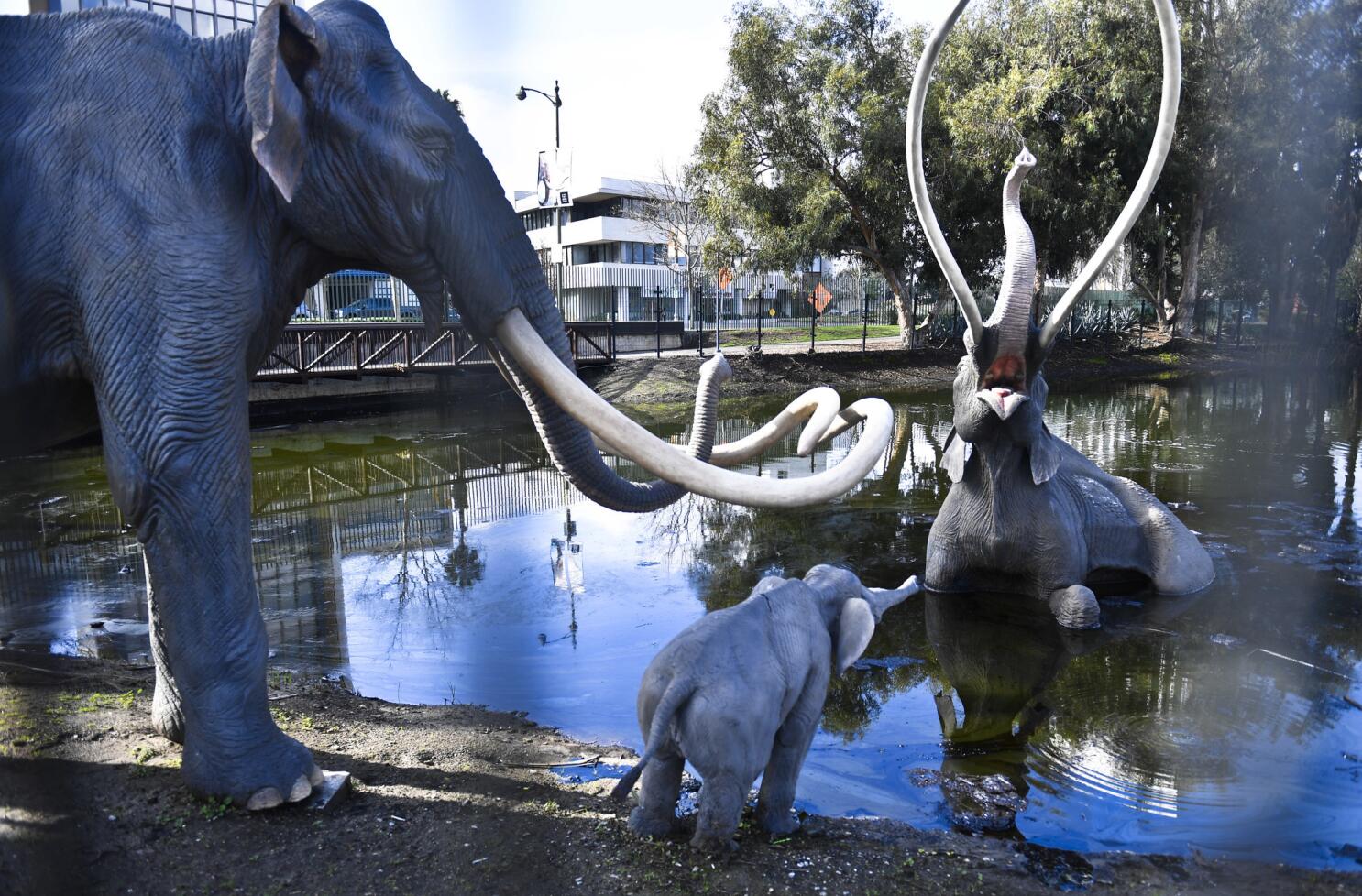Unearth the Fascinating Globe of Ice Age Creatures at the La Brea Tar Pits and Gallery in LA

Background of the La Brea Tar Pits
The background of the La Brea Tar Pits days back thousands of years, showcasing an unique all-natural phenomenon that has captivated scientists and site visitors alike. Found in Los Angeles, California, these tar pits have been permeating all-natural asphalt for tens of hundreds of years, developing a sticky catch for unsuspecting animals. In time, these tar pits have actually protected an exceptional collection of Glacial period fossils, offering indispensable understandings right into the primitive globe.
Researchers believe that the tar pits were formed from petroleum that seeped with the Planet's crust, developing swimming pools of asphalt externally. As pets would certainly come close to the water to drink, they would certainly become embeded the tar, inevitably resulting in their death. This natural trap has actually maintained the remains of many animals, including mammoths, saber-toothed felines, alarming wolves, and ground sloths.
The La Brea Tar Matches have actually become a substantial historical site, supplying a glance into the fauna of the Pleistocene epoch. La Brea Tar Pits and Museum excavator tour. With recurring excavations and research, scientists proceed to reveal fossils that strengthen our understanding of ancient ecological communities and the types that roamed the Planet countless years earlier
Glacial Period Animals on Show
Having uncovered a treasure chest of Ice Age fossils from the tar pits, the La Brea Tar Pits and Museum currently showcases a fascinating selection of ancient animals for visitors to marvel at. One of the most popular animals on display is the Columbian Mammoth, an enormous forefather of contemporary elephants that strolled the Los Angeles area throughout the Ice Age. These unspoiled fossils provide an one-of-a-kind chance for site visitors to step back in time and witness the extraordinary biodiversity that existed during the Ice Age, making a see to the La Brea Tar Matches and Museum a genuinely immersive experience in primitive discovery.
Tar Pit Excavation Refine
Just how is the intricate process of digging deep into tar pits executed to discover old fossils at the La Brea Tar Matches and Museum? The excavation process at the La Brea Tar Matches involves a precise mix of scientific methods and careful dealing with to protect the delicate fossils hidden within the tar.
Originally, the excavation team recognizes potential dig sites based on previous discoveries and geological surveys. When a promising place is picked, the team clears the surface greenery and starts the fragile job of getting rid of the tar. Specialized devices such as brushes, trowels, and shovels are used to carefully extract the tar and sediment surrounding the fossils.
As the excavation progresses, any discovered fossils are documented in situ to tape-record their accurate place and positioning. This paperwork is critical for assembling the primitive ecological community and understanding the behavior of Ice Age creatures.
When the fossils are safely drawn out, they undergo precise cleansing, evaluation, and conservation in the museum's laboratories. By following these rigorous excavation procedures, the La Brea Tar Pits and Gallery can continue to unearth and showcase the interesting globe of Glacial period creatures for generations to come.
Interactive Exhibitions for Site Visitors
Enhancing the site visitor experience at the La Brea Tar Pits and Museum, interactive exhibitions supply appealing opportunities for guests to immerse themselves in the globe of Glacial period creatures. These interactive displays supply a hands-on technique to finding out about the primitive age, permitting site visitors to touch fossils, imitate excavations, and even participate in digital reality experiences that transport them back in time.
One of the most popular interactive exhibits is the Fossil Laboratory, where site visitors can observe paleontologists at the office cleaning and examining fossils discovered in the tar pits. This behind the curtain check out the research study process gives visitors a look right into the scientific methods used to reveal the secrets of the Glacial period.

Paleontological Discoveries at the Museum
The La Brea Tar Pits and Gallery display a remarkable selection of paleontological discoveries that supply valuable understandings into the primitive globe of Ice Age animals. The museum's collection includes over one million fossils, making it among one of the most significant repositories of Glacial epoch specimens globally. Site visitors can admire well-preserved skeletal systems of mammoths, saber-toothed felines, alarming wolves, and other vanished animals that as soon as wandered the Los Angeles location.
One of one of the most legendary explorations at the La Brea Tar Pits is the near-complete skeletal system of a Columbian massive, affectionately named Zed. This sampling, in addition to countless others, offers scientists an unusual possibility to study the anatomy, actions, and ecology of Ice Age over here megafauna. Through mindful excavation and thorough conservation strategies, the gallery continues to discover new fossils, broadening our understanding of the ancient communities that existed thousands of years back.
Verdict
Finally, the La Brea Tar Matches and Museum in LA provide a special chance to discover the globe of Glacial epoch animals through interactive exhibitions and paleontological explorations. Visitors can witness the excavation process of fossils from the tar pits and discover the history of this interesting website. The museum offers a engaging and academic experience for any ages interested in ancient life and the Planet's nature.

The La Brea Tar Matches and Gallery display a remarkable range of paleontological discoveries that supply beneficial understandings into the prehistoric world of Ice Age creatures (La Brea Tar Pits and Museum photos).In final thought, the La Brea Tar Matches and Gallery in LA use an one-of-a-kind possibility to check out the globe of Ice Age animals with interactive exhibitions and paleontological explorations